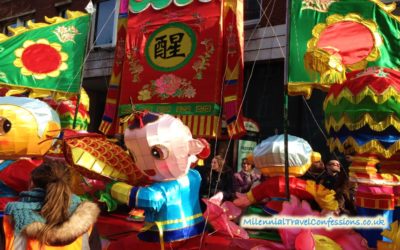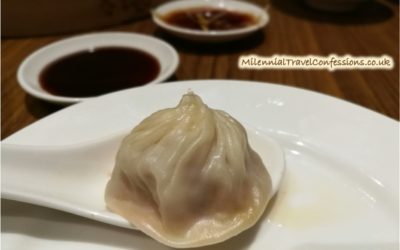Best time to go to Japan: Japan’s Climate for Travellers Explained
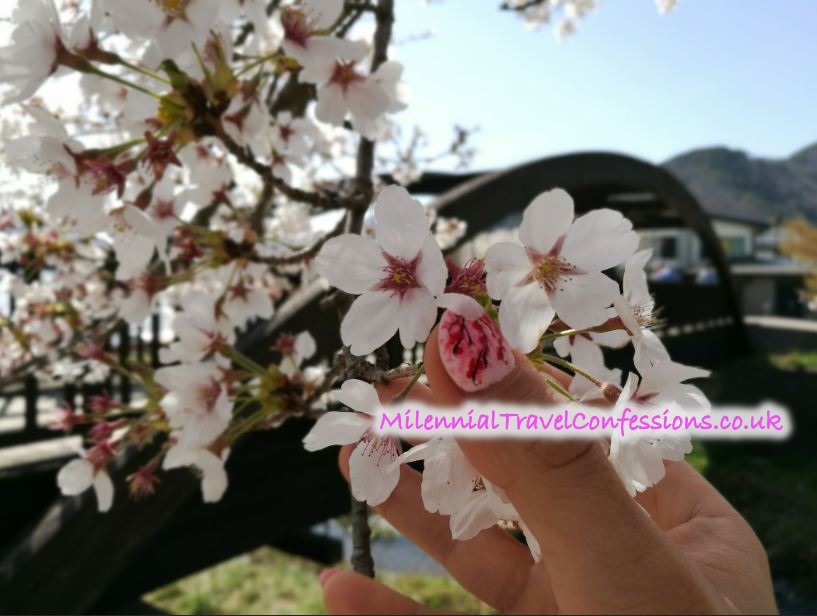
Understanding the climate of a country or a region you’re going to is an absolute must to get the best travel experience, especially if the country is spread across different climate zones and therefore so diverse. This article is all about the climate in Japan and the best time to go to Japan.
If you want to get it perfectly right, this may require a little bit of time but will be totally worth your time! So, before booking your cheap flights to Japan, grab a cup of tea or coffee and dive in to this brief geography lesson.
Japan’s Climate For Travellers Explained
The climate of Japan is very diverse due to its shape. Japan consists of 4 main islands: Honshu, Kyushu, Shikoku and Hokkaido. Its geographic location is spread between 24° and 46°N, and longitudes 122° and 146°E, making it a very diverse tourist destination with almost 3000 km long archipelago if counted from the north to the south.
As a result of its mountainous and forested geography, certain areas of Japan are virtually uninhabited whilst other parts are considered one of the most populated areas in the world. However, in terms of terrain, it somehow resembles the one in Norway with 70% of the land in the mountains. This is something you should remember and notice almost immediately upon leaving bustling Tokyo or Osaka, especially when you visit remote parts of Kyushu island or make your way up Hokkaido.
Since Japan also sits in the Northern Hemisphere, the seasons in Japan are somehow comparable to the ones in mainland Europe but they are more distinct, more intense and more humid. They can start before or after the seasons change in Europe, depending on the geographical location. Think of it as a long and narrow country starting somewhere in Switzerland and going down below south of Spain, around Egypt.
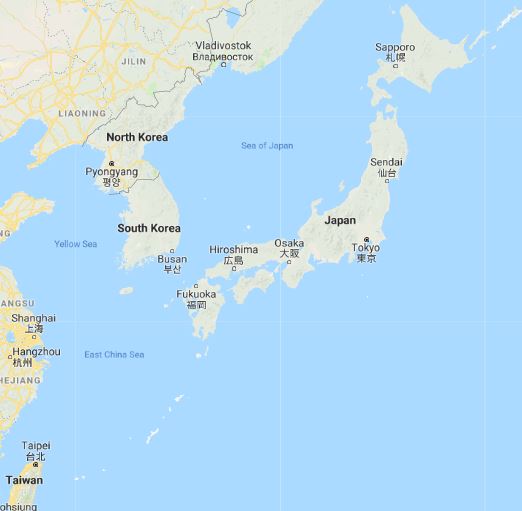
It can also be compared to the range of climates in North America, from Nova Scotia in the north to The Bahamas in the south in the East Coast. Japan’s climate ranges from subarctic in the northern region to subtropical in the south, making it even more complex if you’re planning to visit all four islands during your stay!
Unlike in some European countries recently, Japan has four distinct seasons, rainy season and typhoon season. This is because of its unique location and a very long shape. The easiest way to see the change in seasons, in particular the arrival of spring, is by watching the cherry blossom forecast for Japan, also known as Sakura. This forecast is extremely important in Japan! I also didn’t know that but thanks to Sakura Forecast it all started making sense to me.
The arrival of summer is defined by the summer cicada and the arrival of rainy season in June and the beginning of autumn is closely monitored by the fall foliage forecast, the typhoons and again heavy rains. As you can see, Japanese people are extremely precise and time-oriented. After all, it’s all about the timing, right? The temperatures will vary depending on the more specific location.
Here’s a quick breakdown of the climate in Japan by the regions to help you quickly identify the best time to go to Japan and enjoy it to the fullest. Scroll down for the detailed list of Japan’s climate year round divided into smaller section by the months.
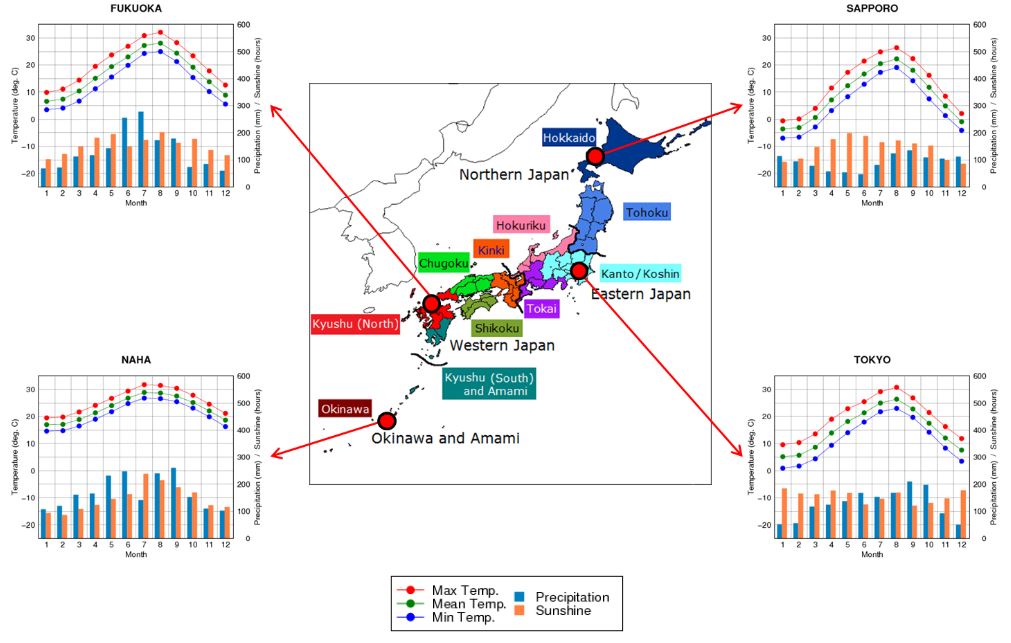
I thought you’d find this one particularly useful as it represents not only the average temperatures and precipitation (rainfall), but also hours of sunshine, minimum and maximum temperatures across all four major regions (from North to South, city and main island): Sapporo (Hokkaido), Tokyo (Honshu), Fukuoka (Kyushu), Naha (Okinawa). Courtesy of: Japan Meteorological Agency
Climate in Northern Japan
Warm summers and very long, cold winters with heavy snowfall in the mountains and the Sea of Japan. Since this part is close to Russia (Sapporo is in line with Vladivostok, and the Japanese city of Wakkanai, north of Hokkaido, is only 30 km from the South of Russian Far East border!) so you can get the idea.
Climate in Eastern Japan
Hot and humid summers with cold winters and heavy snow, in particular around the mountainous areas and the Sea of Japan. I couldn’t really find the right comparison but think of hot and dry season in South East Asian countries. It does get pretty hot!
Climate in Western Japan
Western Japan gets even hotter, the peak time is July and August. The temperatures in the summer in this part of Japan can reach 35 degrees Celsius! The winters here aren’t too bad and are considered moderate cold. Both Western and Southern Japan have short mild winters.
Climate in Central Japan
Since Central Japan is located on an elevation, you can expect hot summers. As for winters, they range from quite short to moderate winters, depending on the altitude, you can expect heavy snowfall in winter.
Climate in Southern Japan
Surrounding the areas of lower parts of Kyushu, Okinawa and Amami, the predominant climate there is a subtropical oceanic. The winters are very mild and summers are hot and humid but rarely reaching 35 degrees Celsius. The majority of tourists tend to visit only the main areas of Japan and this is what I’m going to focus on. Based on the location you’re visiting and activities it involves, find out what is the best time to go to Japan and make the most of your stay! Click here for more information on what to pack for Japan.
When is the best time to go to Japan?
Personally, if talking purely about the weather in general, probably mid April and May or October. However, depending on what you really like and want to see in various regions of Japan, this statement can differ significantly. Surely, you won’t be able to see everything within one to two weeks of holiday and I’m quite certain you will be returning to this wonderful country.
This is why I’ve prepared a detailed guideline of the weather in Japan by months and included the best places or events that are happening within that time. I hope this helps you plan and cement your decision on when is the best time go to go Japan according to your personal and not general preference!
Japan Weather Explained By Months
Japan Weather in January
Just like in Europe and North America, January is the coldest month across the whole of Japan. Typically, it’s a sunny and rather If you are an avid winter sports enthusiast, you are going to love Northern Japan as it is usually covered by the thick layer of snow. Since for the majority of ski resorts in Japan the ski season start as early as mid to late December and goes on till April, you won’t be disappointed.
Skiing period is at its peak between mid January and mid February. The main cities, such as Tokyo, Osaka, Kyoto, Nagoya and even Hiroshima might get some occasional snow but it’s not guaranteed. Since the rainfall is at its lowest as well, it might be a dry and fairly pleasant but also quite a cold time to visit Japan.
If you like mild temperatures similar to the ones in the south of Spain or Greece, Okinawa and the southern islands will be a good option for sightseeing, cheaper accommodation but unfortunately no swimming!
Where to go: Hokkaido, Nagano Sports: Skiing, Snowboarding and other winter sports
Best time to visit Japan for: Snow Monkeys, Hatsumode
Japan Weather in February
This is Japan’s second coldest month after January. Although February is not as cold as January, the difference in temperature is quite negligible in most parts of Japan. However, there’s a couple of things to look forward to! One, world famous Sapporo Snow Festival. Being the snowiest big city in the world, this city receives twice as much snow as Ottawa and Moscow!
If you’re into snow sports, February is the safest month for skiing and it’s almost guaranteed in the vast majority of ski resorts.
Since the temperature is on the rise and springs is in the air, starting to show early signs in the southern parts of Japan, this is the best time to go to Japan for plum blossoms, an alternative to cherry blossoms, they are almost just as beautiful!
Good news! You can also see cherry blossoms in the southernmost parts of Japan as February is also the best time to go to Japan’s subtropical Okinawa island and Ryukyu islands. On average, the first bloom starts at the end of January but the full bloom is estimated around mid of February. Since the average temperature is about 16-18 degrees, it makes it for a pleasant sightseeing trip without crowds, reasonable flights and accommodation to enjoy the early signs of spring.
Where to go: Hokkaido, Sapporo, Nagano, Japanese Alps and Okinawa Sports: Skiing, Snowboarding and other winter sports
Best time to visit Japan for: Sapporo Snow Festival, Snow Monkeys in Nagano, Plum blossoms and Cherry blossoms
Japan Weather in March
March is quite an interesting month and provides you with a long list of options. If you’re planning to time your visit with the cherry blossom season, this is unconditionally the best time to go to Japan. It really honestly doesn’t matter where you’re going to start off as long as you arrive around mid March and later. If you worry that you arrive too early or too late, purchase the JR Pass and travel freely across various parts of Japan to see the best cherry blossoms spots at their peak.
Did you know that JR Pass is only accessible to tourists travelling from outside of Japan and not to the residents of Japan? Well, make the most of this privilege! The general rule is that the cherry blossom blooming starts in the south of Japan and gradually travels up north. As for the winter sports, winter sports aficionados are still good to enjoy their stay in Japan.
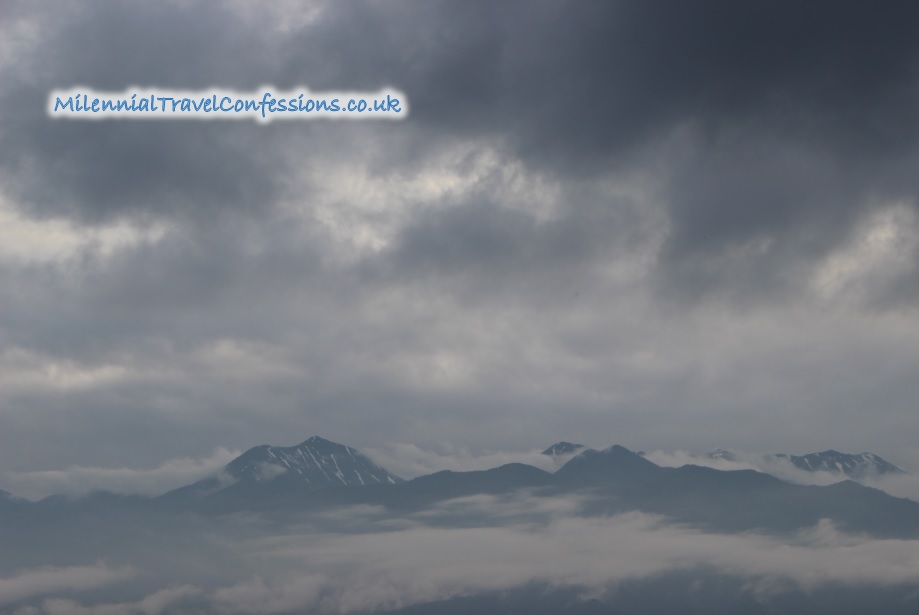
Even during exceptionally warm March, the majority of ski resorts should still be open.
Alternatively, try Gassan in Yamagata Prefecture or Okutadami Maruyama in Niigata prefecture which usually stay closed during winter months due to too heavy snowfall and only open around late March-April. March in 2018 was very, very warm with some temperatures as high as 26 degrees Celsius and many cherry blossom spots, including Tokyo and Kyoto saw their peak about 10 days before the estimated yearly schedule.
This is not usually the case and March is still considered to be quite a cold month with a few warm days. For some more spells of sunshine, head to Okinawa, it’s your best bet to start relaxing on the beach. Even though warm Kuroshio current (also called “Black current”, a north-flowing ocean current similar to the Gulf Stream in the North Atlantic) surrounding Okinawa and Ryukyu islands brings warmer waters to the coastline, you’re better off bringing your wetsuit for water sports.
Where to go: All of Japan Sports: Skiing, Snowboarding and other winter sports
Best time to visit Japan for: Cherry blossoms across the main parts of Japan (excluding Hokkaido and Okinawa)
Japan Weather in April
April is considered by many to be one of the best months to visit Japan and I totally second this statement. To start with, spring is present across Japan bringing pleasant, warm temperatures. During daytime you can even wear t-shirts, however, since it’s just like in Europe, the temperatures in the evening do drop to about 10 degrees Celsius and even around or below 0 degrees Celsius around mountainous regions. If you visit Japan in April, you are going to witness something out of this world.
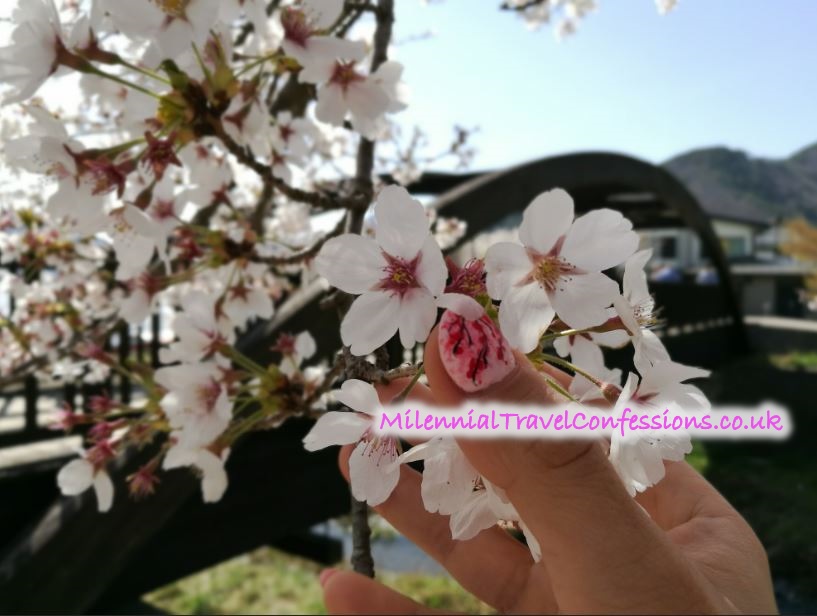
Whether at its peak or past the peak, cherry blossom season will welcome you with some spectacular and truly unforgettable nature wonders covering and transforming many parks, rivers and temples in a dignified form of sakura-shade flower petals. Outdoor areas, in particular parks, get pretty crowded thanks to this worldwide-anticipated natural event but it’s totally worth it as you’ll see thousands of Japanese people enjoying Hanami, the cherry blossom viewing parties with their friends and family picnicking out in the parks.
The season for snowboarders and skiers is generally closed by that time unless you’re planning to visit Gassan in Yamagata Prefecture or Okutadami Maruyama in Niigata prefecture which will open as the very heavy snowfall accumulated during winter months starts to drop to a manageable level.
You can finally satisfy your needs for an early sunbathing experience and water sports in Okinawa and southern islands. The beaches are starting to get busier and the water temperature is raising. Don’t expect South East Asian sea temperatures but it’s about mid June’s Mediterranean Sea’s temperature, making it perfect for Brits and Scandinavians who are generally more accustomed to the colder waters than the Southern Europeans.
Sightseeing in April is super comfortable no matter where you go in Japan. Simply grab a jacket and jeans, you will probably still need it during daytime and definitely in the evening. Towards the second half of April, in some places like Tokyo, Osaka or Kyoto where you can see the vast majority of tourists, it will be warm enough to wear only a t-shirt and even a pair of shorts.
If you happen to miss the cherry blossom season because you are arriving mid to late April, consider Kawaguchiko, the Five Fuji Lake area near Tokyo and of course, Hokkaido where the cherry blossom season starts at the end of April and goes on sometimes even till mid May. Also, late April is when the beautiful Wisteria flowers and baby blue Nemophila flowers start to bloom!
Where to go: Anywhere across Japan Sports: Water sports in Okinawa
Best time to visit Japan for: Cherry blossoms across Japan, Fuji Shibazakura Festival, Wisteria flowers in Kyushu, Nemophila in Ibaraki, ideal conditions for general sightseeing
Japan Weather in May
Speaking from my own and many locals’ experience, May is probably the best time to go to Japan. It’s sunny and warm across all of Japan, including the northern parts of Japan which tend to be much cooler due to their geographical location. Early May is still good to see cherry blossoms but only in the northern parts, mainly in Hokkaido region. It’s also the best time to see wisteria in Japan! Remember about the Golden Week holiday celebrated across the whole of Japan!
https://www.instagram.com/p/BkXnb_sllBe/?hl=en&tagged=shibazakura
Travelling around that time and finding accommodation especially near the tourist attractions can be quite pricy as the Japanese people will be visiting many tourist attractions in Kyoto, Osaka, Nara, Nikko, Kyushu island and others, including museums and shopping malls with their children and attending many organised Golden Week events and annually held Golden Week festivals. Make sure you see the Sumo Tournament in Tokyo held in May, watched by everyone in Japan!
Although this is also the beginning of typhoon season, you may not fully experience it. The same applies to Okinawa where the rainy season begins. We experienced it only for a few days and it did not seem to be as strong as you’d imagine. Quite the opposite, after the heavy rains lasting a few hours, the sky would clear out, leaving the air very fresh shortly after the rain ended. I found May in Okinawa and neighbouring southern islands called Ryukyu islands probably the best time to visit Japan’s tropics.
The water temperature was perfect to enjoy the swim and snorkelling, and often warmer than the sea temperature during warmest months in the Mediterranean (especially southern islands) and the heat, although already very strong, still pleasantly bearable. However, the lower your go, the hotter it gets, frequently reaching 30 degrees Celsius.
Also, it’s probably the best time to go to Japan’s islands to swim with the abundant marine life without worrying about encountering a wide variety of jellyfish species that loves warm waters and arrives there in the warmest months! Recently I came across this interesting article about giant jellyfish found in Japan that’s pretty old now – the size of jellyfish is still incomprehensive!
Where to go: Anywhere across Japan Sports: Water sports in Okinawa, Sumo tournaments in Tokyo
Best time to visit Japan for: Golden Week festivals and events across Japan, Ideal conditions for general sightseeing, Cherry blossoms in Hokkaido, Fuji Shibazakura Festival, Wisteria in Kyushu, Nemophila in Hitachi Seaside
Japan Weather in June
If you’re planning to visit Japan in June, prepare for heavy rains. With an exception of Hokkaido, you will experience the rainy season in all of Japan. We stayed in Osaka, Kyoto, Nara, Himeji, Kyushu and other cities and Kanto region seemed to be affected by the rainy season quite a bit, maybe even more than others.
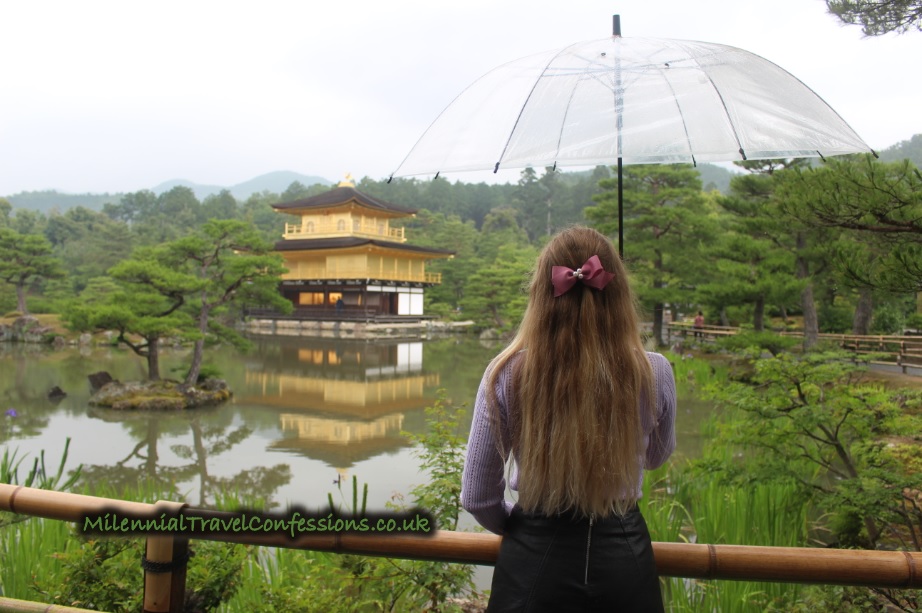
It never rains but it pours! You can take it literally when referring to the weather in Japan in June. Whilst this can spoil your plans for outdoor activities, Japan has plenty of alternatives for the rainy days.
Whilst during sunny days it’s typically t-shirt and shorts weather (expect 25-30 degrees Celsius), it gets much cooler when it starts raining so bring a raincoat, a pair of jeans and a jumper, you’ll most likely need it. What you’re going to see is rain, grey sky and increased humidity but very bearable.
No offence Brits, you won’t know any different. We’re Londoners ourselves so this is pretty much what you can expect, with an exception of very heavy rains seen sometimes in August in London or November in Barcelona . These rains are ongoing and can turn your plans into a misery if you’re visiting Japan to see beautiful landscapes that require you to be outdoors. However, usually towards the second half of June, the skies tend to clear up and it gets hot and very sunny.
Whilst you’re going to be cursing these rainy days in Kyoto or Osaka, residents in Tokyo just get on with it and pack an umbrella, just like many Londoners do. Did you know that Tokyo receives twice as much annual rainfall as London, making it one of the rainiest capitals in the world? Well there you go, surely there will be plenty of other options indoors to keep you occupied and glued to endless Tokyo attractions!
Be sure to spend an evening in Shibuya gazing at hundreds of colourful umbrellas crossing world renown Shibuya crossing, seen from the top of Shibuya station or Starbucks. Whilst June is probably not the best time to go to Japan due to the expected heavy rainfall, there will be a few good days in the second half of June. Take that into account when booking your flights to Japan.
Make sure to see the beautiful round-shaped bouquets of sky blue Hydrangea flowers, which make the temples and shrine look out of this world!
Where to go: Anywhere across Japan Sports: Water sports in Okinawa and Kyushu, hiking
Best time to visit Japan for: flower fields in Hokkaido, overall good conditions for general sightseeing, keep an eye on the heavy rains everywhere in Japan (except for Hokkaido), Hydrangea across Japan
Japan Weather in July
What’s the weather in Japan in July like? Hot. Not just hot, humid as well. For some people who are accustomed to mild weather conditions in Europe, it might be quite unbearable due to the strong heat that starts in July and goes on for the next two months or so. Also, forget about the rainy season, it will be gone and won’t spoil your summer plans.
Whilst it’s not the norm, Japan gets affected by the heatwaves (similar ones to the recent heatwaves in Europe with 35 degrees Celsius going up to around 40 degrees Celsius). You can easily compare it to the heat in the southern Mediterranean region except for it will get sticky and quite unpleasant in Japan. If you’ve been to the tropics of South East Asia, it’s no different but this time you’ll be surrounded by the tall, glass buildings reflecting the sun and augmenting the already high sun intensity.
There will be no rainforest to cool the ground off, either, I’m afraid! Japan also gets more crowded towards end of July because of the school holidays in Japan that start around 20th July and last till end of August. Take it into account as the waiting times for some of the tourist attractions will increase. When the sweltering heat gets too much, you can choose museums or other indoor activities, there will be plenty.
Whilst Tokyo is very hot in July, Osaka and Kyoto get even hotter but luckily hotels, Airbnb accommodation, and almost all cafes and indoor places are equipped with air-con units. You can also cool off in many swimming pools which tend to open with the arrival of July, marking start of the summer season.
Great news, guys! Mount Fuji climbing season starts in July! Alternatively, choose summer holiday destinations by the beach as it will be more pleasant, such as Kyushu island. Visiting Hokkaido in July might be a good option for summer lovers with dry heat like the one seen in mainland Europe.
Hokkaido is noticeably less populated and has a rich Japanese culture. Expect to see some stunningly beautiful rainbow-coloured flower fields and camping by the azure blue lakes in the mountains of Hokkaido island.
https://www.instagram.com/p/Bl3B8QSna_s/?hl=en&tagged=furano
The 2020 Summer Olympics, also known as Tokyo 2020 is planned to happen between end of July and August so Summer 2020 might be worth considering. However, be aware of the unbearable heat. Sadly, Japan was affected in July 2018 by severe flooding followed by the intense heatwave causing many deaths across Japan. You can read more about the extreme weather conditions here.
Where to go: Anywhere across Japan, Sports: Water sports across Japan’s coastline and lakes, Climb Mount Fuji, hiking
Best time to visit Japan for: Royal blue Hydrangea across Japan by temples and shrines, Sapporo Summer Festival, Lavender fields in Hokkaido
Japan Weather in August
August is seriously hot and sticky! It’s the warmest month in Japan so if you think you can handle 30 degrees Celsius, then Tokyo, Kyoto and Osaka will have a big surprise for you – expect temperatures soaring somewhere between 35 degrees Celsius up to high 30s! But don’t worry, Japan has got it covered.
For all that suffering in the humidity and heat comparable to the one in the tropics, you get rewarded with some of the liveliest, vibrant and outstanding summer festivals and many fireworks called Hanabi in Japanese across all regions in Japan. Some attract close to 1 million visitors so make sure you get your mobile data activated in case you get separated from your friends by the crowds!
Just like in Europe, August is when everyone takes their time off work so expect to see people everywhere you go. Beaches are packed with holidaymakers and there will be plenty of beach activities available. Here’s the catch, if you asked me purely about the weather, perhaps August is not the best time to go to Japan but add to it all the festivals across Japan and you will change your mind in no time.
If you’re staying in the big cities, make sure to see Obon festival held in mid August, one of three largest nationwide events in Japan and probably just as busy and expensive as the Golden Week in May and The New Year’s. Obon is a Buddhist custom to pay tributes to the spirits of the Japanese families’ ancestors, with thousands of lanterns to be seen hung outside the residential houses.

Tokyo will turn into an equivalent of Rio De Janeiro Carnival in late August thanks to its annually held Asakusa Samba Carnival so expect Latino hot vibes out there! The other festival worth seeing is Hiroshima Lantern Ceremony to commemorate 6th August 1945 Hiroshima Atomic Bombings, Summer Sonic Festival If you cannot hack the heat and humidity for too long, include a flight to Hokkaido for more pleasant dry heat to see the natural beauty of the sea, mountains and the lakes.
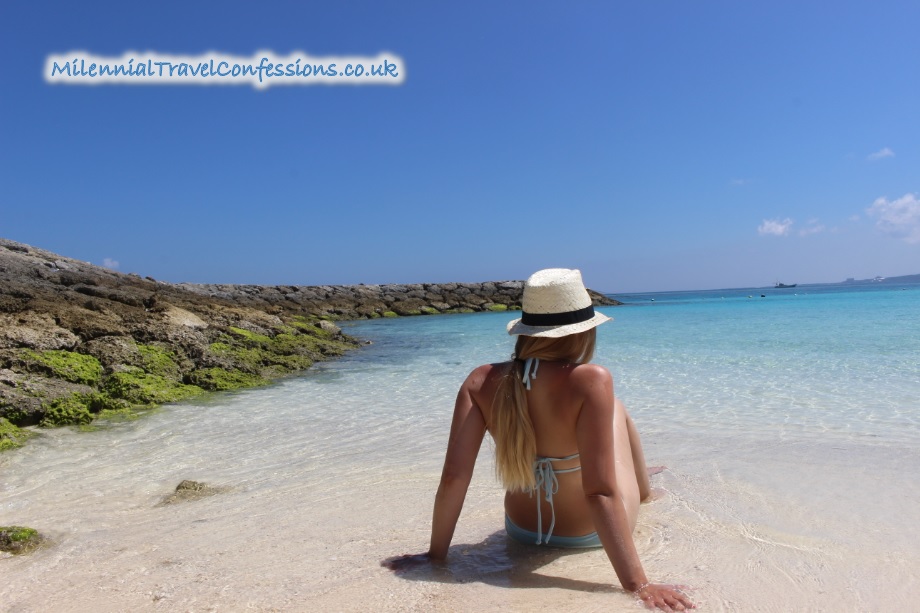
There’s a possibility of getting caught in a typhoon season, especially if you’re in Kyushu and Okinawa islands where you are bound to see some of the most abundant forms of the marine life that also attracts various jellyfish types due to the warmest waters in August – just so that you have that in mind before booking your holiday tickets.
Where to go: Anywhere across Japan Sports: Water sports anywhere in Japan, Climb Mount Fuji, Hiking
Best time to visit Japan for: Lavender fields in Hokkaido, Asakusa Samba Festival, Obon festival, Yokohama Fireworks and many other regional summer festivals
Japan Weather in September
Just like in Mediterranean Europe, the sweltering August heat is ended bringing slightly cooler, but very warm summer. It’s also typhoon season so it is also going to be rainy and quite dark, a little bit like June. If you’re visiting Japan in September and stopping in Tokyo for a few days, book yourself in for the Sumo Autumn Basho tournament, the last opportunity to see sumo wrestlers before end of the year.
If you happen to experience a typhoon in Japan, there will be cloudy and gloomy across some areas of Japan due to the movement of a typhoon around the Pacific Ocean. Some areas get very affected and in extreme cases can cause power cuts and landslides like this year’s typhoon Jebi, the strongest storm in the last 25 years reaching 200 km/h! To read more on BBC website, click here.
If you’re lucky and miss it, it will be a very pleasant time to explore Japan and enjoy summer activities. Avoid Tokyo if you don’t like rain as this is Tokyo’s darkest and rainiest month!
Been to London and think you can hack it? It gets much worse than London as the rainfall in September is much greater but luckily, it’s also warmer. Then again, rain shouldn’t stop you so just like Londoners, bring an umbrella with you and enjoy the endless Tokyo attractions, whether indoor or outdoor. Hokkaido has a much slimmer chance of being exposed to the typhoons thanks to its northern location on the map and it’s much drier than elsewhere in Japan and it’s still very warm.
If typhoons and strong winds don’t bother you too much, Kyushu and Okinawa islands are still the warmest but sadly, also the rainiest in Japan! In case you’re looking at when and where to see the autumn foliage in Japan, visit Hokkaido in mid September in the mountainous regions and you won’t be disappointed.
Where to go: Anywhere across Japan Sports: Water sports across Japan, Climb Mount Fuji
Best time to visit Japan for: Sumo Autumn Basho tournament, good conditions for general sightseeing on non-rainy days, autumn foliage in Hokkaido
Japan Weather in October
For those who are planning on visit Japan for general sightseeing, this is arguably the best time to go to Japan. If you cannot make it in May, visit Japan in October to be spoilt for the fantastic landscape thanks to the autumn foliage creating a wonderful range of shades from yellowish to bright red by many landmarks, gardens and temples. Maple trees are mapped all over Japan and they create the explosion of the senses even for those who aren’t particularly into nature wonders.
https://www.instagram.com/p/Bj3aJEvnp7i/?hl=en&tagged=japanautumn
The typhoon season is slowly making its way towards dry and still warm weather across Japan. Expect rains in Tokyo and cooler nights so wherever you go, bring along a light jacket and if you’re in Tokyo, also an umbrella. In the northern regions of Japan, including Hokkaido, the colours may fall by the end of October, whilst the main Honshu island is warm, crisp and sunny during daytime and gets a bit chilly in the evenings.
It really is a little bit like April so bring a variety of clothes as you’ll need them as the colder air intensifies throughout the October weeks. Trust me, you’ll be glad for bringing a wide range of outfits. Autumn foliage tends to begin around mid October and continues until December so you can be comfortable about seeing some of the most anticipated sights, identical to the pictures of famous landmarks in Japan spotted on Instagram.
Head to Kyushu island and Okinawa for a bit more sunshine and heat as the typhoon season will probably end by then. Luckily, the water temperature stays very warm but the temperature drop will you’re your stay in Okinawa very pleasant and cheaper as the school holidays are long gone! It is also a good opportunity to schedule in your trip to Kyoto during Jiday Matsuri festival in Kyoto taking place on 22nd October where people dressed in the 9th century outfits celebrate the founding of Kyoto will form a huge parade going from the Imperial Palace to Heian Shrine. Did you know that?
Wondering where to spend Halloween this year? Visit Japan in October, allocate the last few October days for Tokyo and head to Shibuya for something you won’t see anywhere else in the world! Japanese people take their pride in and are known for their creativity and attention to details to the next level with not hundreds but thousands of people coming in groups to celebrate Halloween in Tokyo!
Where to go: Anywhere across Japan Sports: Water sports in Okinawa, Hiking in the mountains
Best time to visit Japan for: Autumn foliage across Japan, especially Nikko and Hakone, good conditions for general sightseeing on non-rainy days, Jidai Matsuri in Kyoto, Halloween in Shibuya Tokyo
Japan Weather in November
Whilst November in Europe is probably one of the least exciting months of the year, Japan continues to stay busy thanks to the autumn foliage being at its best. If you’re into landscape photography or simply enjoy the autumn months, November, just after October, might be the best time to go to Japan.
It won’t be warm unless you’re in Okinawa and Ryukyu islands but a pair of jeans, a jumper and a jacket will make your trip to Japan a lot more pleasant. The views of the temples and Japanese gardens are comparable only to the ones during the cherry blossom season (and even better according to some!). November is considered to be a fairly dry month with occasional rains, with an exception of Hokkaido, surprising visitors with occasional snow in the more mountainous parts.
Anywhere in Japan the weather will be pleasant with dry and crisp air and chilly evenings, making it very desirable for efficient sightseeing trips but no more t-shirts, even during daytime. Okinawa will still be good for swimming but maybe you’ll prefer to bring a wetsuit with you. For sunshine and warm waters, I’d recommend South of Thailand instead, however, sightseeing will be very enjoyable and the prices will be much lower than in the summer and you’ll notice that this part of Japan will start to get a little more chilled out.
Since the evenings are starting to get much cooler (and days won’t be getting any warmer) across entire Japan, you will love to dive in the hot springs, commonly referred to as onsens! One of the best spots for hot springs in Japan are around Kamakura, Hakone, Fuji Five Lakes, Nagano and Kyushu near the world famous Hells of Beppu known for their remarkable natural hot springs thanks to Kyushu’s active volcanos.
You can combine it with the last of the six sumo tournaments in Japan being held in nowhere else but Kyushu. You can even see some snowfall in Hokkaido but it’s usually not big enough to commence the skiing season. However, there’s a German Christmas Market beginning at the end of November and plenty of Christmas decorations across Hokkaido and all major cities in Japan.
Where to go: Anywhere across Japan Sports: Water sports in Okinawa, Hiking in the mountains
Best time to visit Japan for: Autumn foliage across Japan, especially Nikko, good conditions for general sightseeing, hot springs anywhere in Japan, Sumo Kyushu Basho
Japan Weather in December
Just like in Europe, December marks the beginning of winter in Japan, which, for many people, this might not be the best time to go to Japan. However, depending on whether you like to layer up and go sightseeing in the cold months, this might be a good option for some people who wouldn’t mind combining their trip with Christmas shopping and visiting beautiful Japanese Alps.
Maybe you can even tick off an early skiing holiday in the northern parts of Japan, such as Sendai, Nagano in Honshu’s and Sapporo in Hokkaido as many ski resorts are likely to open in the second half of December.
https://www.instagram.com/p/BdKD9KfhYpj/?hl=en&tagged=tokyoxmas
Not to mention a fantastic opportunity for a warmer than most places in Europe New Year’s Eve in Tokyo with fabulous fireworks and plentiful illuminations around the city that turns into a huge gallery of illumination wherever you go. So just like for Europe, Paris is the city of lights, for Asia, the spot for the king of lights is undeniably held by Tokyo!
If you like photography, you are going to love being anywhere in Tokyo, Osaka, Kyoto and Fukuoka. Despite days being much shorter, the air is crisp and rainfall is rare. You won’t see the snow unless you’re in the northern parts of Japan so don’t worry about any train disruptions! Since Japan archipelago’s length is around 3000 km, you can seek some sunshine around Okinawa but the water temperature will be only around 21 degrees Celsius (still warmer than the sea temperature in the UK during warmest months!).
Ryukyu islands will be a little warmer. Since many people in Japan and China are seeking sunshine, Okinawa islands can get quite busy and the temperature will be still very warm, anywhere between 17 and 25 degrees Celsius on the warmest days. Put it this way, think of the typical British summer months (but not the abnormal spells of pan-European heatwave) and this is what you’re going to get in Ryukyu islands such as Yaeyama islands.
The difference is, there is still abundant marine life in the sea, delicious and fresh seafood at reasonable prices and the chances are, you will still be able to swim in the sea if you are from most European countries. And if this wasn’t enough, make sure you visit nearby Kyushu island known for its unique landscape and onsen towns filled with steamy hot springs, making it a perfect destination for relaxed holiday in truly Japanese style.
Where to go: Anywhere across Japan Sports: Water sports in Okinawa, Hiking in the mountains
Best time to visit Japan for: Christmas illuminations, Christmas shopping, New Year’s Eve in Tokyo, hot springs in Japanese Alps and Kyushu island
When Is The Best Time To Go To Japan For You?
I hope you found this article useful and gave you some more clarity on when and where to go in Japan based on the preferred climate and activities you enjoy most. I created this article to help you understand Japan in more detail as I couldn’t find an article like this when we were booking flight for Japan and everything seemed to be so confusing at first. If you have any suggestions on other things, drop a line so other readers can benefit from it! Don’t forget to check out my post about the guide to Tokyo’s top best neighbourhoods to have the most enjoyable time in Japan!
ISHIGAKI ISLAND GUIDE 2020 – Must-See Things To Do In Ishigaki Japan You Didn’t Know About!
Welcome, welcome! You’ve come a long way. If you’re after a decent Ishigaki island guide, you can finally get some rest; you deserve it after finding me here. Remember to take your shoes off, it’s an Asian household! You’re going to learn a thing or two about some of...
read moreLONDON CHINATOWN 2020 – How To Celebrate Chinese New Year in London Chinatown
All You Need To Know About Chinese New Year 2020 in London Chinatown With Christmas and New Year making a slow way out of London’s streets and landmarks in early January, there are other festivals unhurriedly making a more discernible appearance in the city in early...
read moreI Dined At Din Tai Fung in London – This Is What It’s Really Like
I’ve been to Din Tai Fung in London - This Is What It’s Really Like Living in big cities like London comes with a huge list of perks. That’s if you exclude the irritating habits of your neighbours next door, inflated rent prices and overcrowded trains on your...
read more






